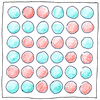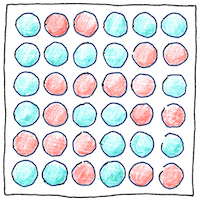Deborah Jin,
Rudolf Grimm,
Wolfgang Ketterle
physics

|
Fermionic condensate
Superfluidic supercool fermionic condensates avoid their mutual avoidance by forming bosonic pairs.
Holes in the theory
If you cool them in separate magnetic domains until they are cold enough to combine as pairs, fermions can move fast without losing energy, but they form quantized vortices when they slow down, creating holes in the material until it loses its superfluidity.
States of matter
Solid, liquid, gas. It used to be simple, like A, B, C. We didn’t know plasmas danced before our eyes, or liquid crystals would dazzle, or protic organic ionic plastic crystals would conduct protons in fuel cells. Scientists tempt strange states of matter at the extremes of pressure and temperature to tease us with the hypothesis that the world we live in is just as strange and potentially transient.



According to theory, fermions have half-integer spins (an odd number of halves), unlike bosons, which have integer spins. Leptons such as electrons are fermions; quarks are fermions. The rules for adding odd numbers are analogous; two odds make an even; an odd number of odds make an odd. Composites of odd numbers of leptons and quarks are fermions. Protons and neutrons are composed of three quarks, so they are fermions. A helium-3 atom, with two protons, one neutron, and two electrons, is a fermion.
See also in The book of science:
Readings in wikipedia: